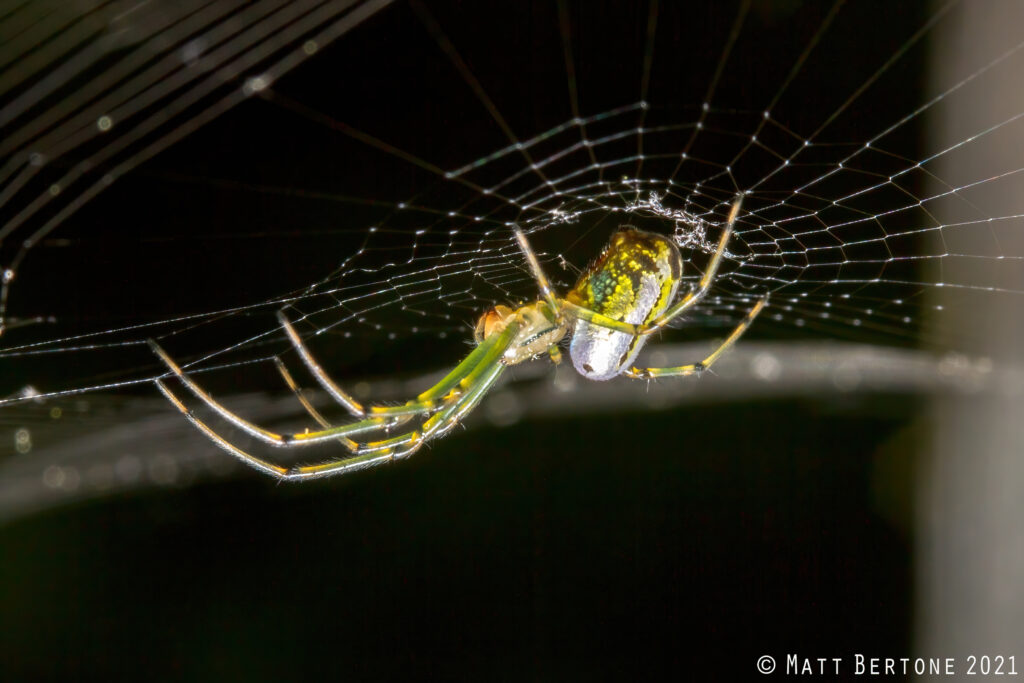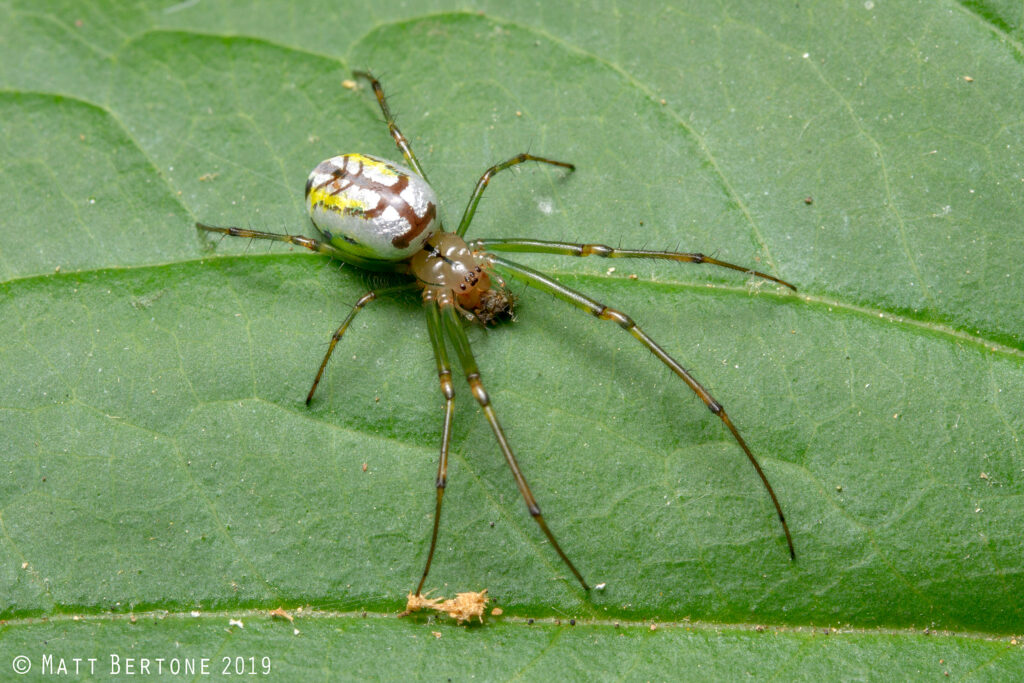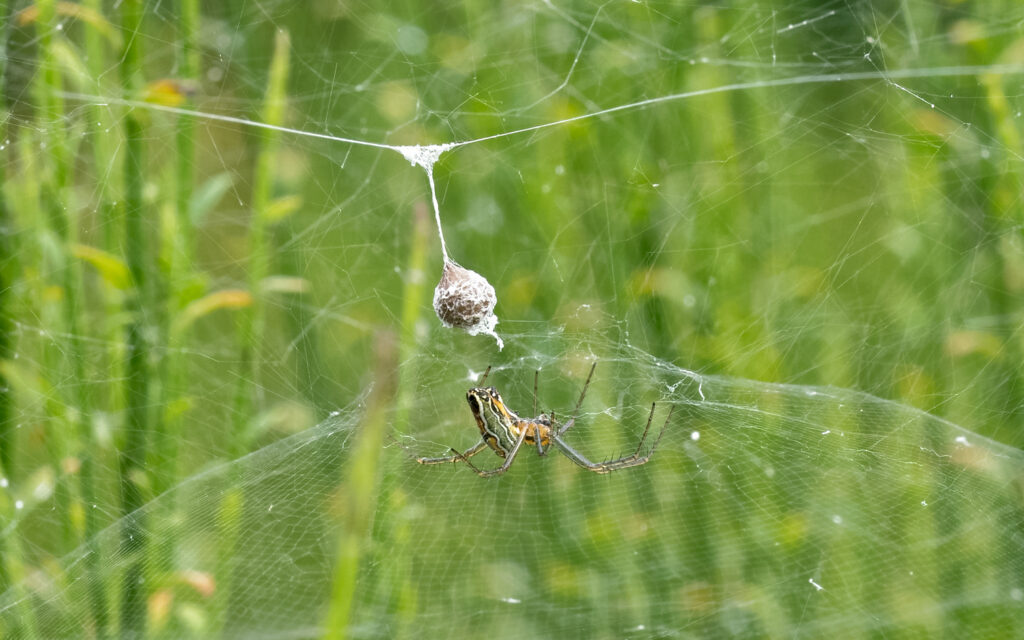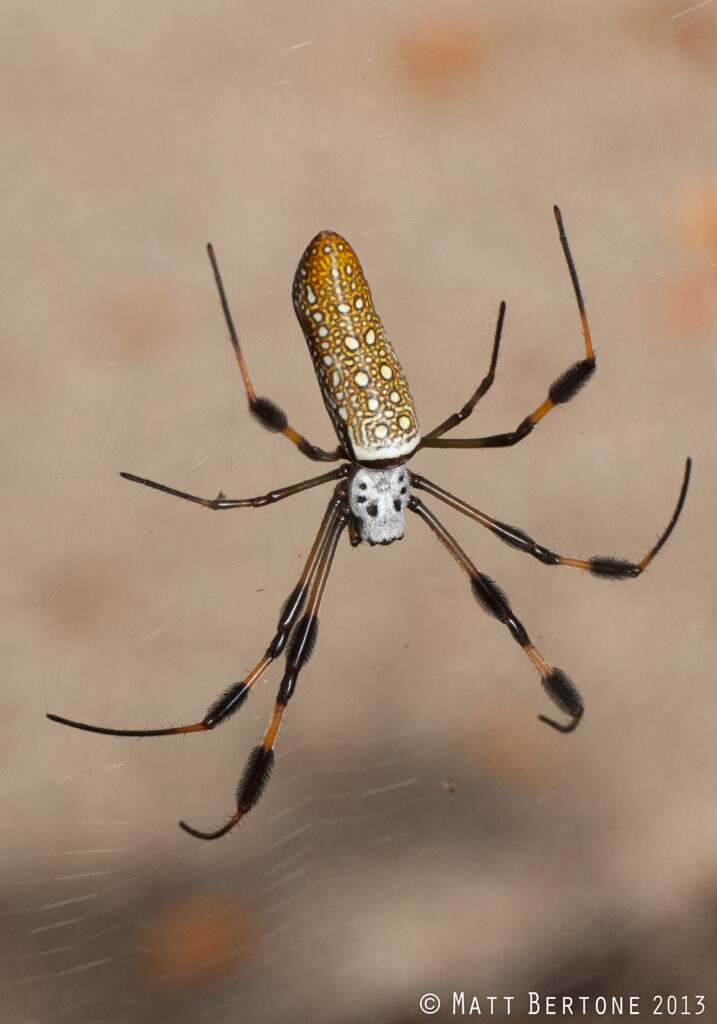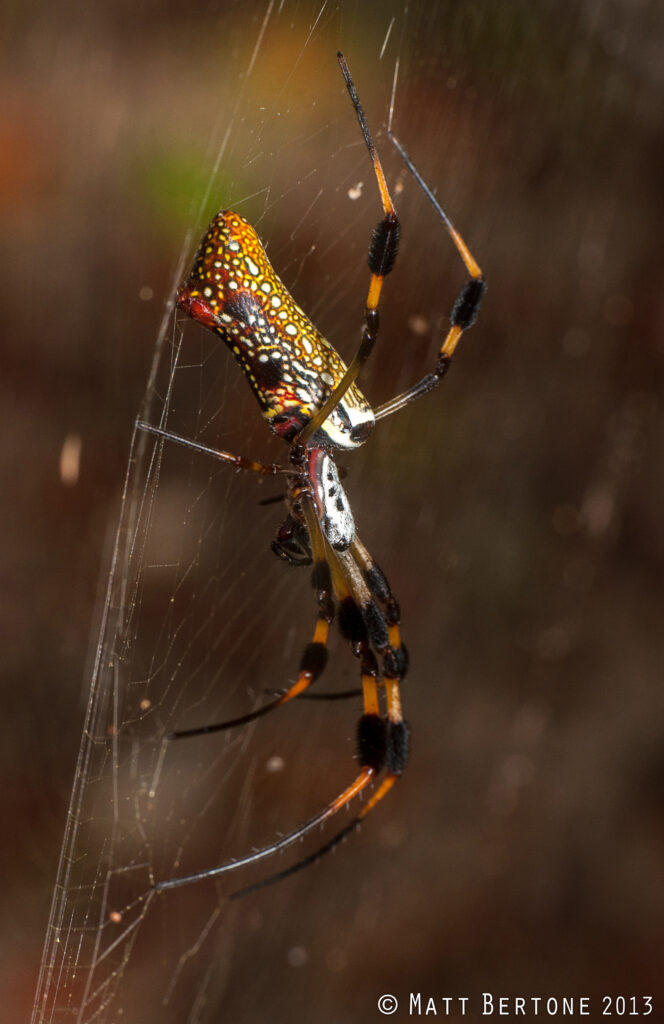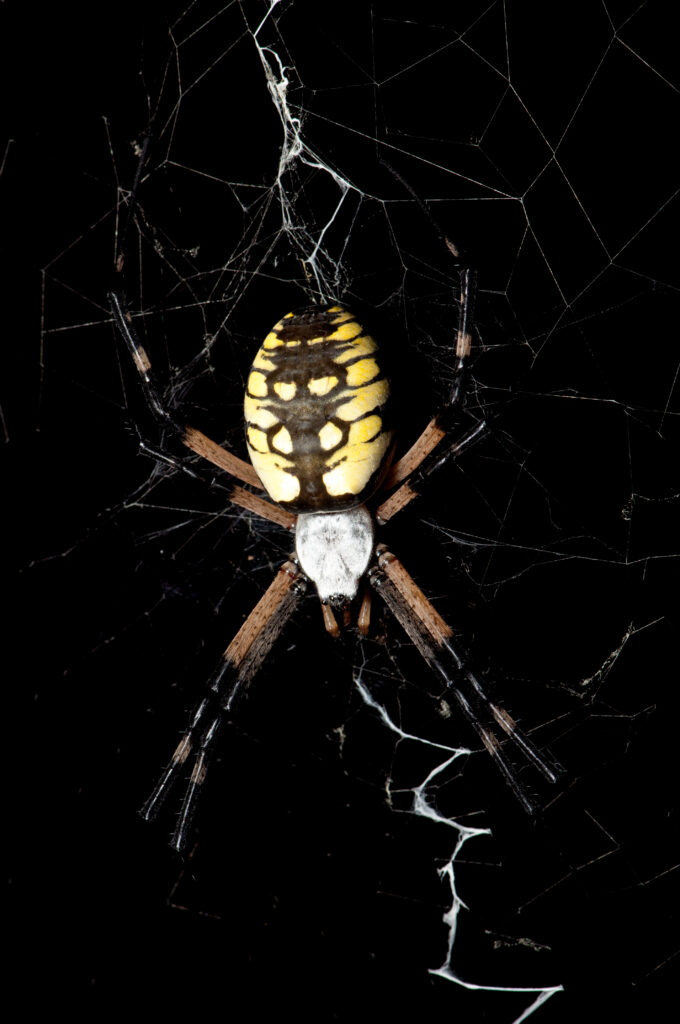Similar but Different: These Are NOT Joro Spiders
go.ncsu.edu/readext?1009269
en Español / em Português
El inglés es el idioma de control de esta página. En la medida en que haya algún conflicto entre la traducción al inglés y la traducción, el inglés prevalece.
Al hacer clic en el enlace de traducción se activa un servicio de traducción gratuito para convertir la página al español. Al igual que con cualquier traducción por Internet, la conversión no es sensible al contexto y puede que no traduzca el texto en su significado original. NC State Extension no garantiza la exactitud del texto traducido. Por favor, tenga en cuenta que algunas aplicaciones y/o servicios pueden no funcionar como se espera cuando se traducen.
Português
Inglês é o idioma de controle desta página. Na medida que haja algum conflito entre o texto original em Inglês e a tradução, o Inglês prevalece.
Ao clicar no link de tradução, um serviço gratuito de tradução será ativado para converter a página para o Português. Como em qualquer tradução pela internet, a conversão não é sensivel ao contexto e pode não ocorrer a tradução para o significado orginal. O serviço de Extensão da Carolina do Norte (NC State Extension) não garante a exatidão do texto traduzido. Por favor, observe que algumas funções ou serviços podem não funcionar como esperado após a tradução.
English
English is the controlling language of this page. To the extent there is any conflict between the English text and the translation, English controls.
Clicking on the translation link activates a free translation service to convert the page to Spanish. As with any Internet translation, the conversion is not context-sensitive and may not translate the text to its original meaning. NC State Extension does not guarantee the accuracy of the translated text. Please note that some applications and/or services may not function as expected when translated.
Collapse ▲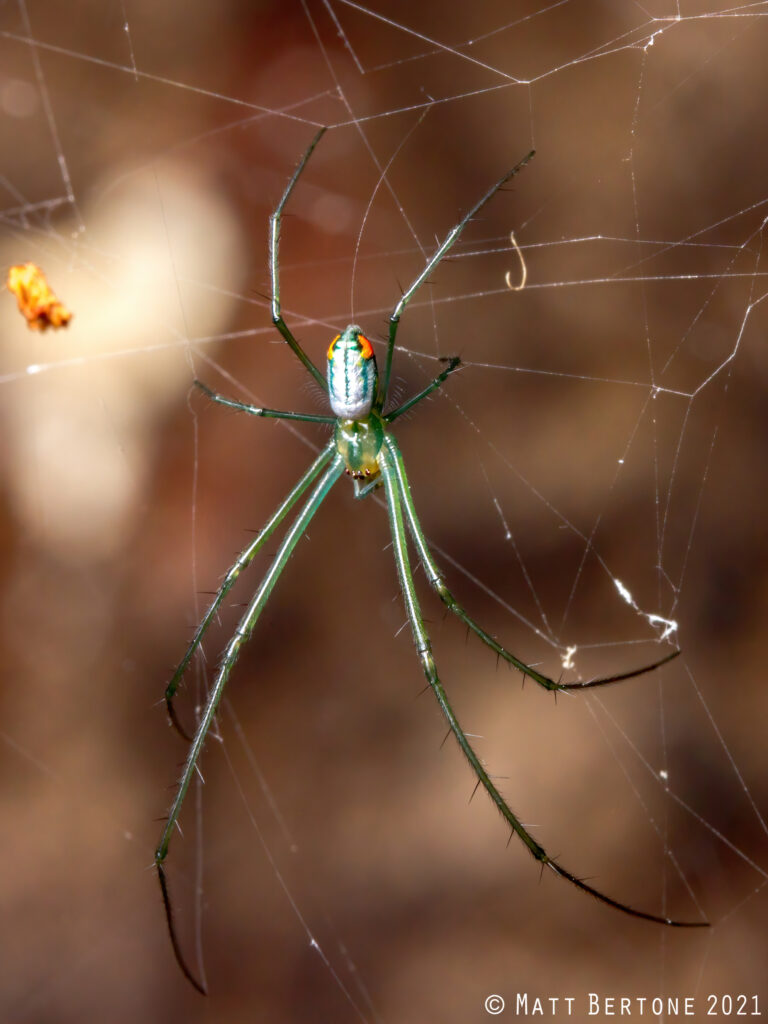
Mini Joro spider? Nope! This is a native orchard spider from NC (Tetragnathidae: Leucauge argyrobapta). Photo: Matt Bertone
Media outlets all over the country have been hyping “giant invasive spiders that will fly into your local area this summer“. If this is news to you, they are referring to Joro spiders (Araneidae: Trichonephila clavata), which have been written about quite extensively over the last few years.
Here are a couple pics of Joro spiders:
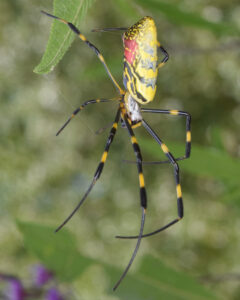
A mature female Joro spider (Trichonephila clavata) showing the bold yellow and blue colors on the abdomen and striped legs. Photo: Christina Butler (CC)
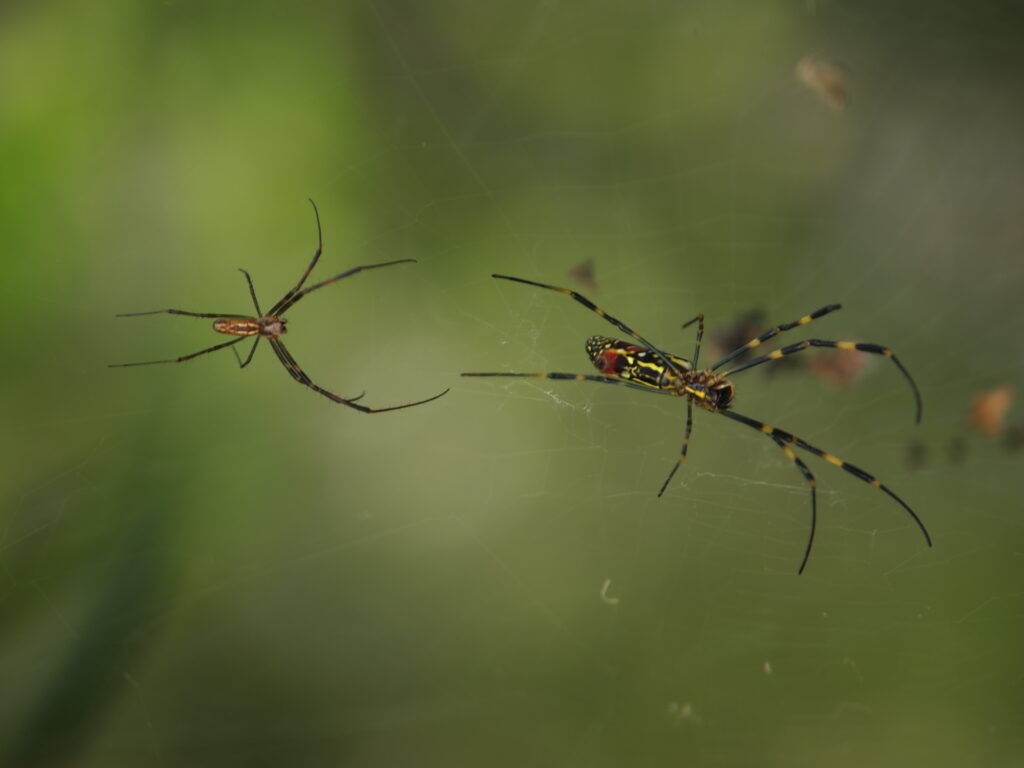
A male Joro spider (above) in the web of a young female Joro spider (below). Photo: Koo Bearhill (CC)
Although it’s true they are spreading from their original introduction in Georgia (USA) many years ago (we have had plenty of confirmed records in NC), there have been some mistaken “sightings” of them lately that turn out to be native lookalikes.
Joro spiders are in a very diverse group known as orbweavers, which contains a few closely-related families (e.g. Araneidae and Tetragnathidae). Many produce typical wheel-spoke webs and sit upside down in the center to wait for prey. However their web architecture can be quite variable.
Due to the great diversity of these spiders, there are some in North Carolina that resemble Joro spiders. We have gotten several ID requests from folks concerned that they’ve found one, but the spider turns out to be a native species.
Orchard spiders (Tetragnathidae: Leugauge) are very common, harmless-but-attractive spiders in gardens, yards, and natural areas. They are silver and green with bold markings:
One good characteristic to look for is the eyelash-like row of hairs on the base of the hind leg (click on the image to enlarge it; can be seen in the title image too):
Orchard spiders typically build a horizontal orb web and hang upside down in it (though sometimes it’s more vertical; see title image). There are two species in NC: the more common L. venusta and the coastal L. argyrobapta. Full size, they are no more than an inch (much smaller than full-grown female Joro spiders), and can be seen in the spring and early summer when Joro spiders are very small and inconspicuous (they only becoming noticeable in the late summer and early fall).
Another similar spider is the basilica orbweaver (Araneidae: Mecynogea lemniscata). This species creates an inverted bowl-like web, under a section of web that is haphazard. They have bold coloration of yellow, red, and green on the abdomen.
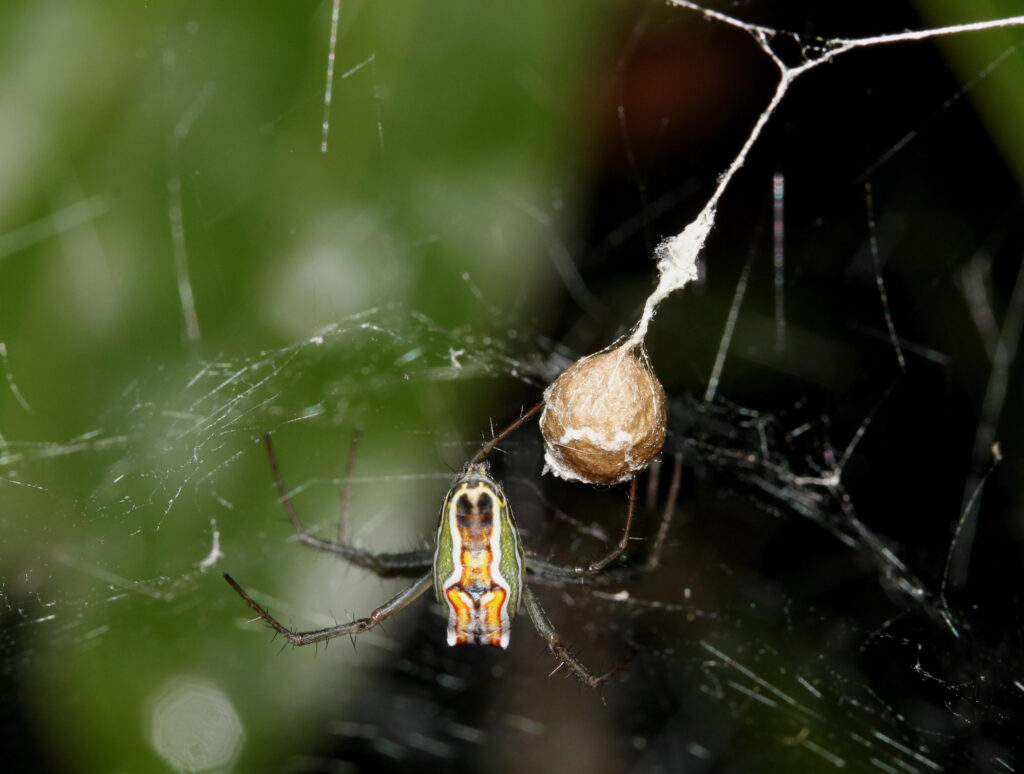
A basilica orbweaver spider (Mecynogea lemniscata) showing the abdomen color and an egg sac. Photo: David Hill (CC)
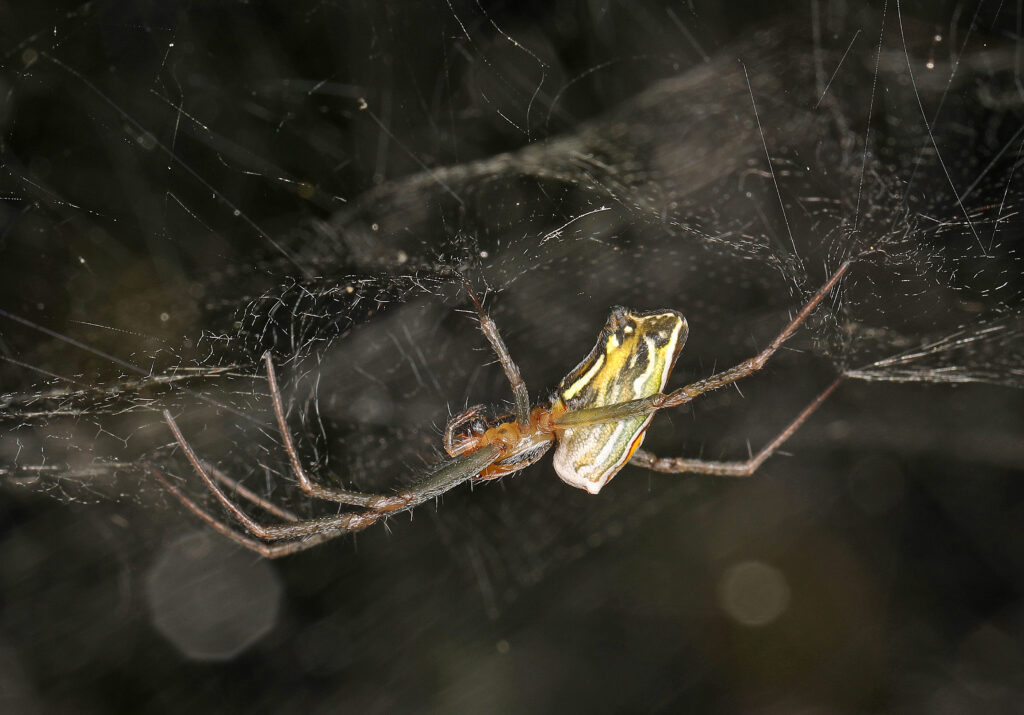
A basilica orbweaver spider (Mecynogea lemniscata). Photo: Judy Gallagher (CC)
Even more characteristic are the egg sacs of the basilica orbweaver (below). They are stacked on one another, like a string of pearls. Often when seen in isolation they can be a strange sight for most people, especially when they are hanging among their plants.
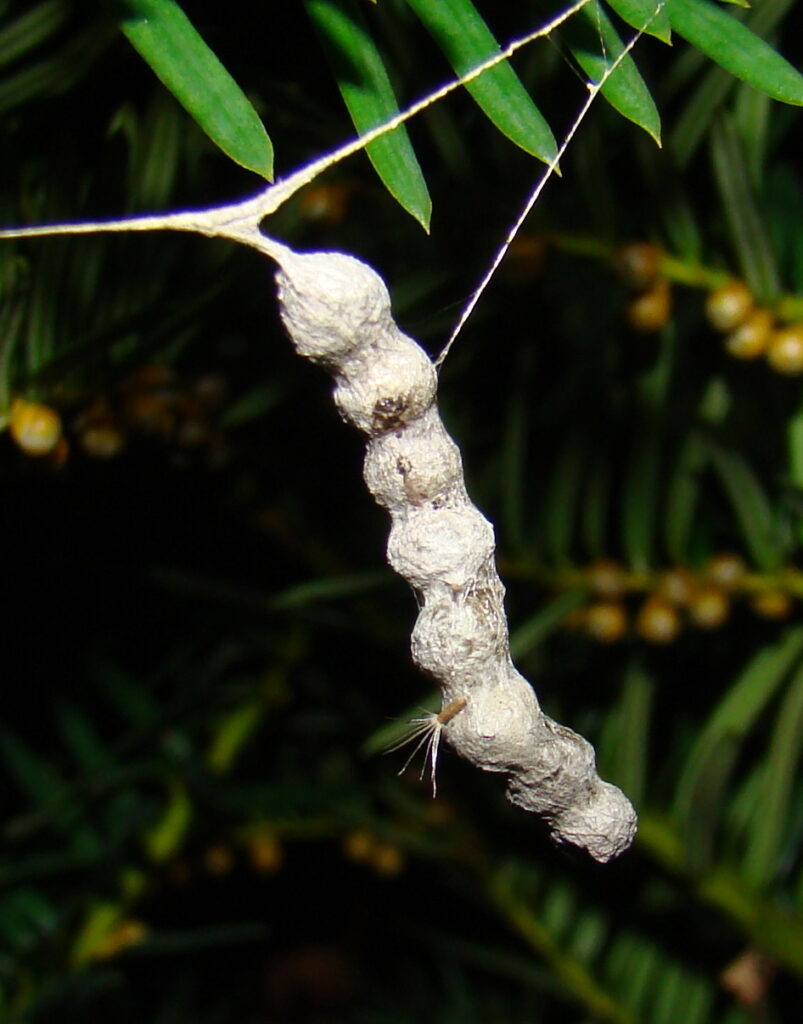
The egg sacs of the basilica orbweaver are stacked, looking like a string of pearls. Photo: Anita Gould (CC)
Of course, it’s possible earlier in the year you’ll come across a true juvenile or male Joro spider, but in those cases ruling out other local spiders (like those above) can help you determine the true identity of the arachnid in front of you.
Finally, be sure to keep an eye out for our other large, harmless, native orbweavers:
The golden silk spider (Trichonephila clavipes), sometimes called a banana spider, is a close relative of the Joro spider. Native to the SE US and American tropics, this species is most often found near the coast, but sometimes it can be found more inland.
The black and yellow garden spider (Argiope aurantia) is widespread in the state. Sometimes called a writing spider, due to the patterns they make in the web, they have a distinct black and yellow abdomen and lack leg tufts. Like the Joro spiders, these are not usually noticed until the females reach maturity in mid- or late summer.



